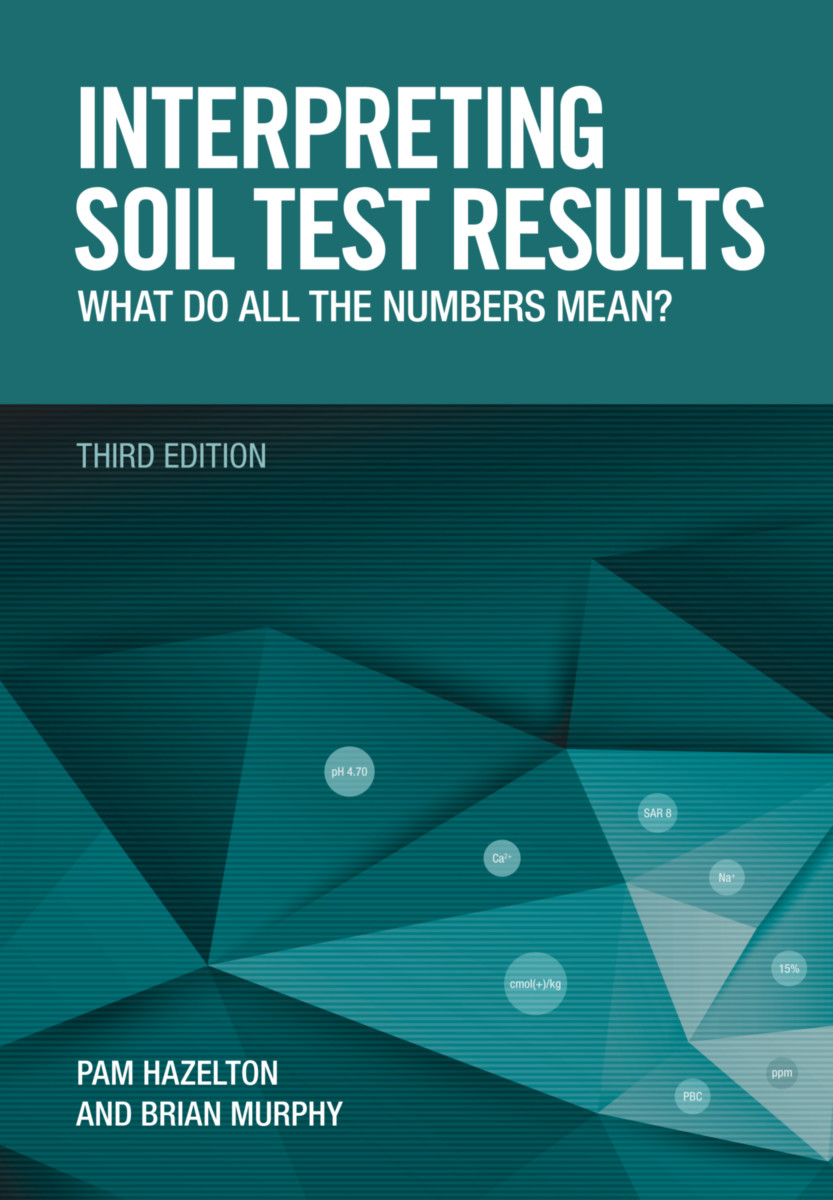EXCELLENCE IN SCIENCE PUBLISHING
Interpreting Soil Test Results Edition 3
What Do All the Numbers Mean?
- Publisher
CSIRO Publishing - Published
26th January 2017 - ISBN 9781486303960
- Language English
- Pages 200 pp.
- Size 6.625" x 9.625"
- Images tables
Interpreting Soil Test Results is a practical reference enabling soil scientists, environmental scientists, environmental engineers, land holders and others involved in land management to better understand a range of soil test methods and interpret the results of these tests. It also contains a comprehensive description of the soil properties relevant to many environmental and natural land resource issues and investigations.
This edition has an additional chapter on soil organic carbon store estimation and an extension of the chapter on soil contamination. It also includes sampling guidelines for landscape design and a section on trace elements. The book updates and expands sections covering acid sulfate soil, procedures for sampling soils, levels of nutrients present in farm products, soil sodicity, salinity and rainfall erosivity. It includes updated interpretations for phosphorus in soils, soil pH and the cation exchange capacity of soils.
Features:
* A quick reference guide to interpreting the numbers associated with a range of soil tests.
* A list of soil properties for which soil testing may be required. Users will be able to judge what soil tests are available for various purposes and how the results of these tests may be interpreted.
* A comprehensive list of references for soil properties and interpretation of results for those who wish to access more detailed information.
Review of the Second Editon:
“Interpreting Soil Test Results is a handy compendium. Soil scientists who write for clients and the clients who read their reports...should find this book valuable.” - European Journal of Soil Science
Introduction
1. Soil sampling issues: aspects of design and implementation of soil investigations
2. Soil physical properties
3. Soil properties and soil behaviour for engineering
4. Soil erodibility and erosion hazard
5. Soil chemical properties
6. Organic matter content of soils
7. Application of waste-water and waste materials to soils
8. Soil contamination
9. Units and conversions
10. General and technical suggested references
11. References
Appendix 1 – Assessing soil texture using field behaviour of moist soil
Index
Pam Hazelton, PhD
Dr. Pam Hazelton has worked as a soil scientist for over 35 years. She gained her PhD from the University of NSW for her research on the morphology and genesis of scald soils in arid regions. In recent years, Pam’s interests have been in urban and coastal soils with an emphasis on environmental engineering.
Brian Murphy, PhD
Dr. Brian Murphy has worked as a soil scientist for over 30 years with a strong focus on applied soil science. He obtained his PhD in 1999 from the University of NSW for his work on soil structure in cropping systems. Brian’s practice has a strong focus on the application of soil science to agriculture, land management, carbon sequestration, hydrology, salinity and urban land use.


